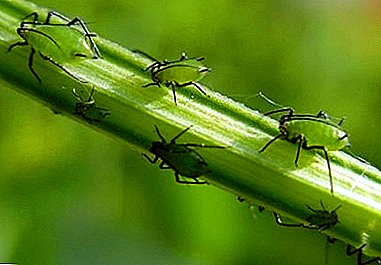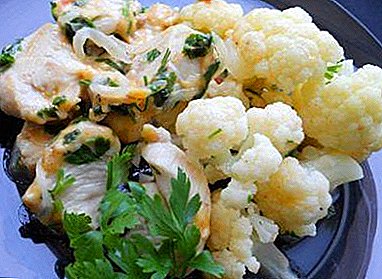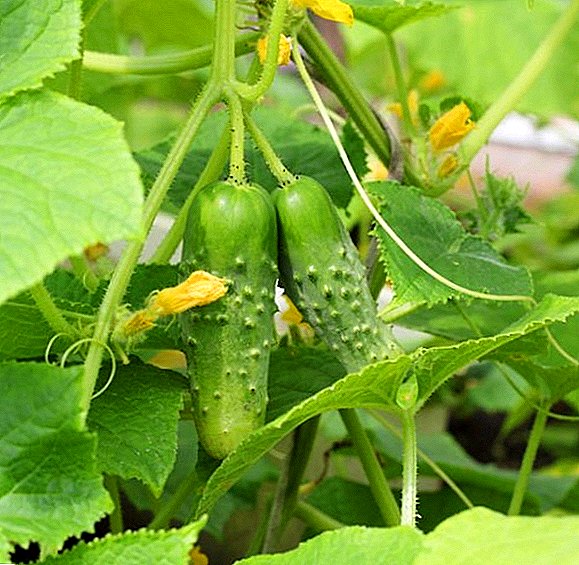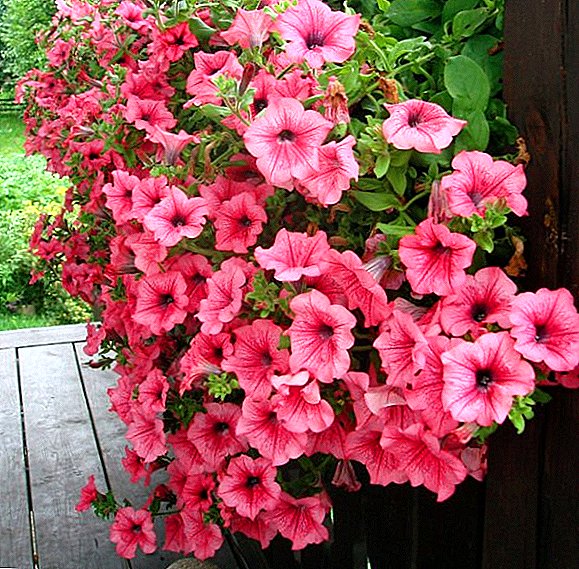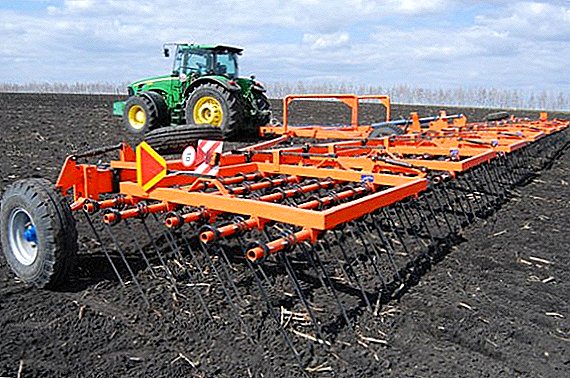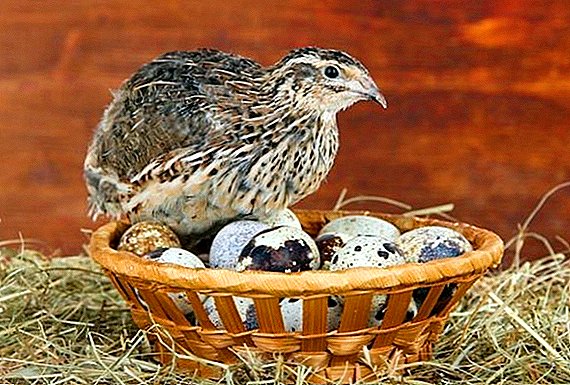 All quail farmers know how important a correct and convenient feeder is for their cultivation. It allows you to fully feed the birds and at the same time ensure the cleanliness of the cages and reduce the cost of food. And although pet stores sell ready-made feeders, almost every breeder can handle their own production.
All quail farmers know how important a correct and convenient feeder is for their cultivation. It allows you to fully feed the birds and at the same time ensure the cleanliness of the cages and reduce the cost of food. And although pet stores sell ready-made feeders, almost every breeder can handle their own production.
Basic requirements for feeders
In the manufacture of this product should comply with the following requirements:
- use only safe, environmentally friendly and hygienic materials;
- take into account the size of the cage and the required amount of feed;
- prevent droppings or litter pieces from entering the feed;
- make sufficiently high sides so that the food does not wake up;
- structures must be reliable, stable and durable;
- convenient for birds and farmer;
- easy to maintain and clean.

We make feeders for quails with our own hands
Making a feeder yourself is not as difficult as it may seem at first glance. You only need to stock up on the required materials and a small amount of patience. Let's look at three design options - bunker, tray and plastic bottle.
Important! In no case should you use copper or other toxic and potentially toxic materials for making the feeder.
Bunker
Required materials and tools:
- Metal sheet;
- locksmith scissors;
- listogib;
- hammer;
- drill;
- riveter;
- pliers;
- clamps;
- calipers;
- ruler.
Check out the best quail breeds. And also learn about the peculiarities of growing such quail breeds as Estonian, Chinese, Manchurian.
Metal bunker feeder for quail do it yourself: video
Step-by-step instruction:
- From the metal sheet, cut the main part with the size of 340x940 mm, the internal (metering unit) with the size of 200x940 mm and two side parts in the form of a rectangular trapezium 180 mm high with bases of 150 mm and 100 mm.
- To protect yourself and the bird, bend all edges tightly in the same plane by 10 mm.
- With the help of the corner bending machine give all the details the necessary configuration.
- On the side parts, first bend the short side (100 mm) and then the rest. Leave small loose tongues on top of the long side.
- When assembling the side parts are worn on the main part of the feeder. The tongues on the sides of the pliers are bent inward, fixing the details.
- The dispenser is inserted inside, all parts are fastened with rivets with the help of a drill and a riveter.
- In order not to “walk” the dosing unit and it could be adjusted depending on the size of the feed, two metal strips-clamps with a width of about 15-20 mm are inserted into the feeder.


It will also be useful for you to learn about the rules of keeping quails at home, all the most important things about breeding quails, as well as how to properly feed quails.


The length of the product depends on the length of the cage and can vary. The size of 940 mm was adopted on the basis of economical use of the metal, since in this case two sheets of food and four pallets are obtained from a sheet of 1250 x 2000 mm without waste.
Important! To make a uniform bend, you should bend both ends of the product with a hammer, then fix the part with a clamp and process the entire edge.
Tray
Required materials and tools:
- tree;
- plywood;
- jigsaw;
- a circular saw;
- hole saw;
- screwdriver;
- calipers;
- ruler.
Tray feeder do it yourself: video
Step-by-step instruction:
- Prepare the base of the feeder - wooden batten 50x1000 mm in size and 15 mm thick.
- Cut two wooden sides and one lintel in the form of a rectangular trapezoid 115 mm high with bases of 95 mm and 50 mm.
- From plywood 6 mm thick, cut two side details with dimensions: 140x1000 mm and 130x1000 mm.
- Cut out 15-16 holes with a diameter of 35 mm with a hole spacing of 30 mm with a hole saw in the larger side part.
- Connect the bottom and the side with the holes with a screwdriver.
- Fit the sides and jumper on the glue and also attach with a screwdriver.
- Attach the last part of the feeder - solid sidewall.






If you cut the grooves on the side and middle parts and insert plywood partitions in them that do not reach the bottom by 2-2.5 cm, you can get a bunker from a trough-type product.
Did you know? Quail eggs are often given to Japanese children, because in this country it is believed that two eggs a day will help the child develop better, get sick less often, have a good memory, sharp eyesight and a strong nervous system. In addition, quail eggs are not susceptible to salmonellosis.
From plastic bottle
Necessary materials:
- plastic bottle;
- sharp knife or scissors.
Step-by-step instruction:
- Cut the bottle in half.
- On the side surface of the lower part, cut 5-6 holes so that the quail head can freely enter them.
- Place the upper part of the bottle down the neck to the bottom so that it does not get a little to the bottom (2-2.5 cm).
- If necessary, with a knife, adjust the height of the bottom of the bottle.
- Pour food into the upper part of the structure and add as it is consumed.
Plastic bottle feeder: video
Useful tips
To make the design really durable and convenient, use the following tips:
- the cut edges of the product must be well processed so that the quail does not hurt;
- in case of group content of quails, it is better to make a sheet metal feeder;
- when constructing an external structure, it should be borne in mind that one individual must have at least 11 mm length of the tray;
- To avoid crowding and crushing of birds, a fodder front of 20 cm should be provided;
- so that the feed does not get enough sleep, you need to load them only 2/3 of the total volume of the box;
- In order to avoid bird scattering, do not put the feeder inside the cage.
Also find out how to keep laying quails at home, when quails start rushing, how many eggs a quail carries per day and how to increase egg production.

Correctly executed trough will reduce feed consumption by 20%.
Did you know? Quail - the first living creatures that appeared in space from the egg with the embryo. This happened in 1990, when the astronauts took 60 fertilized eggs with them and raised them in a special incubator. The experience showed that cosmic radiation had no negative impact on the embryos, and beautiful healthy chicks hatched out of them.
Constructing a quail feeder with your own hands, you can not only save a lot, but also get a product that takes into account all your requirements and the size of bird cages available in the economy. In addition, if necessary, you can easily replace any of its parts, or make a new feeder.


